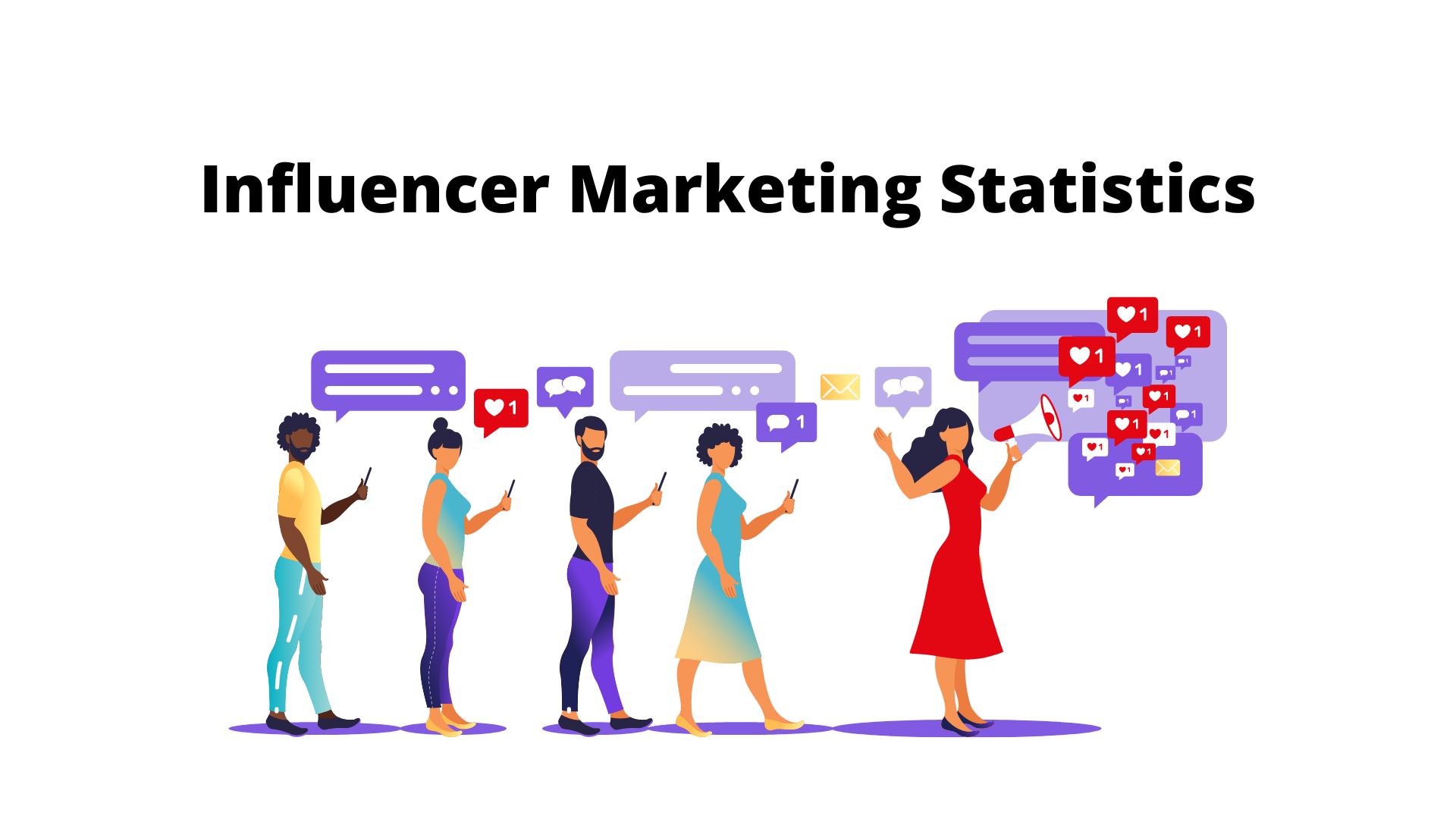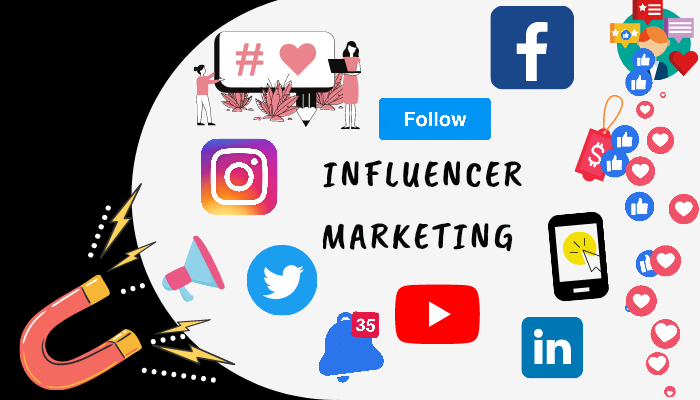In today’s digital age, where social media reigns supreme, influencer marketing has emerged as a powerful strategy for brands to connect with their target audiences. As we delve into the world of influencer marketing statistics, it becomes evident that this dynamic landscape is not only fascinating but also integral to the success of modern businesses.
Influencer Marketing Statistics: The Ultimate Guide

A. Definition of Influencer Marketing
Influencer marketing involves collaborating with individuals who have a significant following on various social media platforms to promote a brand’s products or services. It’s a strategic partnership where influencers leverage their credibility and reach to enhance a brand’s visibility.
B. Importance of Influencer Marketing Statistics
Understanding the metrics and trends associated with influencer marketing is crucial for businesses aiming to optimize their marketing strategies. Let’s explore the growth and evolution of this ever-changing landscape.
Growth of Influencer Marketing
A. Historical Overview
In the early days, influencer marketing was an experimental venture, but it has rapidly evolved into a mainstream marketing channel. Brands have transitioned from traditional advertising to leveraging the influence of individuals who resonate with their target audience.
B. Current Market Trends
As we navigate the current influencer marketing landscape, we witness trends such as the rise of nano and micro-influencers, a shift towards video content, and the prevalence of long-term partnerships over one-off campaigns.
Key Influencer Marketing Statistics
A. Reach and Engagement Metrics
Measuring the impact of influencer marketing goes beyond follower counts. Reach and engagement metrics, such as likes, comments, and shares, provide a more comprehensive view of a campaign’s success.
B. Industry-Specific Data
Different industries experience varying degrees of success with influencer marketing. Understanding industry-specific data helps businesses tailor their strategies to align with their unique challenges and opportunities.
C. Social Media Platform Insights
Each social media platform offers distinct advantages for influencer marketing. Whether it’s Instagram’s visual appeal, Twitter’s real-time engagement, or YouTube’s video-centric approach, choosing the right platform is paramount.
Benefits of Influencer Marketing
A. Increased Brand Awareness
Influencers can introduce a brand to a vast audience, significantly boosting brand awareness. The authenticity of influencer endorsements often resonates more effectively than traditional advertising.
B. Authenticity and Trust
Consumers trust influencers they follow, considering them peers rather than advertisers. This authenticity fosters trust, a valuable commodity in the digital marketplace.
C. Cost-Effectiveness
Compared to traditional advertising, influencer marketing often proves more cost-effective. The return on investment (ROI) is favorable, especially when considering the potential reach and engagement.
Challenges
A. Fake Followers and Engagement
One challenge faced by the industry is the presence of influencers with inflated follower numbers or engagement metrics. Discerning the genuine influence of artificial popularity is crucial.
B. Measuring ROI
Quantifying the success of influencer marketing can be challenging. Brands must establish clear metrics and KPIs to evaluate the impact on their bottom line.
C. Finding the Right Influencers
Selecting influencers that align with a brand’s values and target audience requires careful consideration. This process involves more than just looking at follower numbers; it requires an understanding of the influencer’s impact and relevance.
Emerging Trends
A. Micro-Influencers
The trend towards micro-influencers, those with smaller but highly engaged audiences, is gaining momentum. These influencers often offer niche expertise and a more intimate connection with their followers.
B. Video Content Dominance
Video content continues to dominate social media platforms. Brands are increasingly collaborating with influencers to create engaging and shareable video content.
C. Long-Term Partnerships
Building long-term relationships with influencers is becoming more prevalent. This approach allows brands to foster deeper connections and maintain a consistent presence in their target audience’s feeds.
Tips for Businesses and Influencers
A. Choosing the Right Influencer
Selecting an influencer goes beyond numbers. Consider factors such as audience alignment, engagement authenticity, and the influencer’s track record with similar brands.
B. Setting Clear Campaign Goals
Establishing clear goals for an influencer marketing campaign is essential. Whether it’s increased brand awareness, product launches, or lead generation, clarity enhances the likelihood of success.
C. Building Mutually Beneficial Partnerships
Successful influencer marketing is a two-way street. Brands and influencers should collaborate to ensure a mutually beneficial partnership, fostering trust and longevity.
The Future of Influencer Marketing
A. Predictions and Projections
Looking ahead, influencer marketing is expected to continue evolving. Predictions and projections hint at the integration of advanced technologies, further blurring the lines between traditional and influencer-led marketing.
B. Technological Innovations Impacting the Industry
Technological advancements, such as augmented reality (AR) and virtual reality (VR), are poised to transform influencer marketing. The incorporation of these technologies will provide immersive and interactive experiences for audiences.
Conclusion
Influencer marketing statistics unveil a vibrant ecosystem where data and creativity converge. As businesses navigate this dynamic landscape, understanding the challenges, leveraging emerging trends, and embracing authenticity are key to success.
Ready to boost your brand with influencer marketing? Request a demo from AIM Technologies today and see how our innovative solutions can elevate your campaigns.
FAQs
How can businesses measure the success of influencer marketing campaigns?
- Metrics such as reach, engagement, and conversion rates are essential. Additionally, tracking brand mentions and sentiment analysis provides valuable insights.
Are nano-influencers as effective as macro-influencers?
- Nano-influencers can be highly effective for niche audiences. Their authenticity and close-knit communities often result in more meaningful connections.
What challenges do businesses face in vetting influencers?
- Ensuring the authenticity of an influencer’s following, evaluating past collaborations, and aligning values with the brand are common challenges.
How can brands overcome the issue of fake followers in influencer marketing?
- Implementing thorough vetting processes, focusing on engagement metrics, and considering micro-influencers can help mitigate the impact of fake followers.
What role will technology play in the future of influencer marketing?
- Technology, such as AR and VR, will offer innovative ways for influencers to engage with audiences, creating immersive brand experiences.




